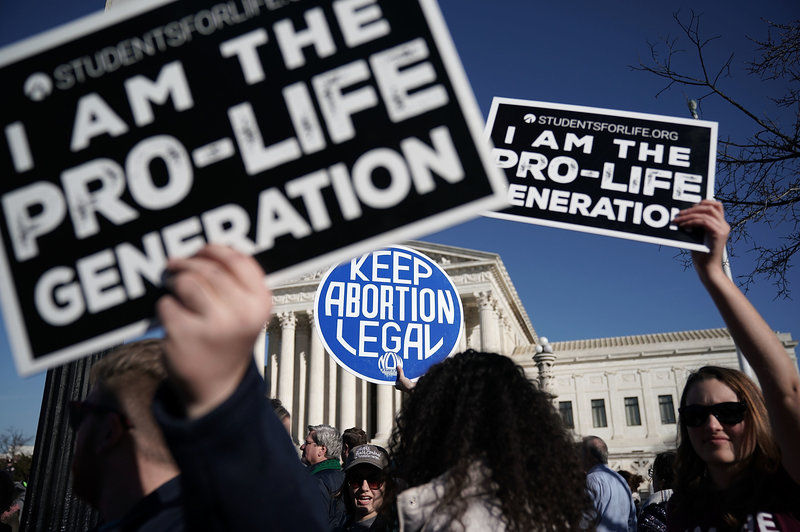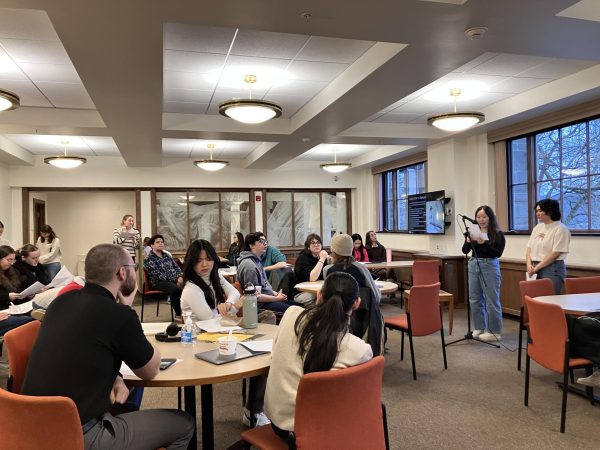Reversing Roe Film Screening: A Look Into American Politics and a Woman’s Right to Chose
Colgate’s “Friday Night Film Series,” sponsored by the Film and Media Studies Department, returned for the spring 2020 semester this past Friday with the 2018 Netflix documentary, Reversing Roe.
The film, directed by Ricki Stern and Annie Sundberg, traces the evolution of abortion policies throughout modern U.S. history—focusing specifically on the 1973 Supreme Court case of Roe v. Wade—in an attempt to understand how we arrived at the current political polarization currently surrounds the abortion debate.
The screening was co-sponsored by Colgate’s Women’s Studies department, as well as the University’s Planned Parenthood Generation Action chapter. Meghan Pauly, a first-year member of the organization, spoke to the importance of the event.
“[The group was attempting to] remind the Colgate community that in today’s political climate, monumental decisions about women’s health and women’s rights are being challenged and changed everyday,” Pauly said.
The film began by highlighting the bleak realities of access to abortion today. Since 2010, 300 abortion restrictions have been passed in the U.S., which have left some predominantly red states like Missouri with only one legitimate abortion clinic. This has created a unique calling for some physicians like Colleen McNicholas, who the film highlights as she travels the country to work in understaffed clinics and perform abortions for women.
Many of the questions surrounding abortion arose in the 1960s when the term “therapeutic abortion” was first introduced, notably with the case of Sherri Finkbine. A beloved children’s television host, Finkbine was thrust into the global media spotlight when in 1961 she penned an article in the Arizona Republic announcing her decision to get an abortion after learning of the birth defects associated with a drug she had taken while pregnant, Thalidomide. Although many supported her choice, others were vehemently opposed, and Finkbine was ultimately forced to travel to Sweden to have the procedure carried out.
Rhetoric from both sides continued up and throughout the 1970s, when the State of New York announced its intention to open the first ever legal abortion clinic in the United States. This spurred the Catholic Church’s “Right to Life” campaign, as well as pushback from many other religious based organizations.
This all came to a head, of course, at the announcement of the Roe v. Wade ruling in 1973. The Supreme Court 7-2 decision made it so that laws forbidding abortion could not be passed at a state-level, essentially making it illegal under U.S. law to prevent women from getting abortions.The landmark ruling had catastrophic social implications, with groups like Randall Terry’s Operation Rescue creating a climate encouraging pro-life activism that often turned violent.
One of its main targets was physician George Tiller, who faced a firebombing in 1986, an attempted murder in 1993 and a fatal shooting by pro-life extremist Scott Roeder in 2009.
Yet, the pro-life movement continued to gain traction, supported by both Presidents Ronald Reagan and George H.W. Bush and by association, the Republican Party. It was then unsurprising when, in 1992, Planned Parenthood v. Casey was brought before the Supreme Court and resolved with a new clause to the Roe v. Wade 1973 ruling: the “undue burden” standard. States were now given the latitude to restrict abortion, and restrict abortion they did.
Thus, while many important strides to retain Roe have been made, an overwhelming number of restrictions have been enacted. The film concluded by highlighting Texas Democrat Wendy Davis’ 2013 attempted filibuster to deny the passage of a bill that would effectively close half of Texas’s abortion clinics. Though unsuccessful, the filibuster became an example of the power of a single person in rallying an army of supporters.
It doesn’t seem as though the debate surrounding abortion will calm any time soon, though. In a country so divided, the question of the right to life or the right to choose is just another way in which we seem to disagree. And, in the words of President Lincoln, a house divided cannot stand.











